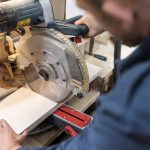Introduction
Tools are a significant investment. This comprehensive guide will help you understand when renting makes more financial sense than purchasing.
Financial Breakdown of Tool Ownership
True Cost of Ownership
- Purchase price
- Maintenance expenses
- Storage requirements
- Depreciation
- Potential repair costs
Scenarios Favoring Tool Hire
Occasional Use Projects
- One-time home renovations
- Seasonal landscaping
- Specialized repair work
- Learning new skills
Project-Specific Considerations
- Unique or specialized tools
- Advanced technology
- Expensive professional-grade equipment
- Infrequent usage
Cost Comparison Examples
Scenario 1: Home Deck Building
- Buying Tools
- Circular Saw: £250
- Drill: £200
- Sander: £150
- Total Investment: £600
- Hiring Tools
- Daily rental rates
- Estimated total: £200-£300
- Savings: £300-£400
Scenario 2: Garden Renovation
- Professional-grade Chainsaw
- Purchase Price: £500
- Used 2-3 times per year
- Rental Cost: £50-£75 per use
- Annual Savings: £400-£450


Additional Benefits of Tool Hire
- Latest technology
- Well-maintained equipment
- No long-term storage needed
- Flexibility to choose right tool
- No depreciation worry
- Free technical support
When to Consider Buying
- Frequently used basic tools
- Professional contractors
- Multiple ongoing projects
- Long-term cost-effectiveness
Conclusion
Smart tool selection is about understanding your specific needs and budget. Tool hire offers flexibility and cost-effectiveness for most projects.




